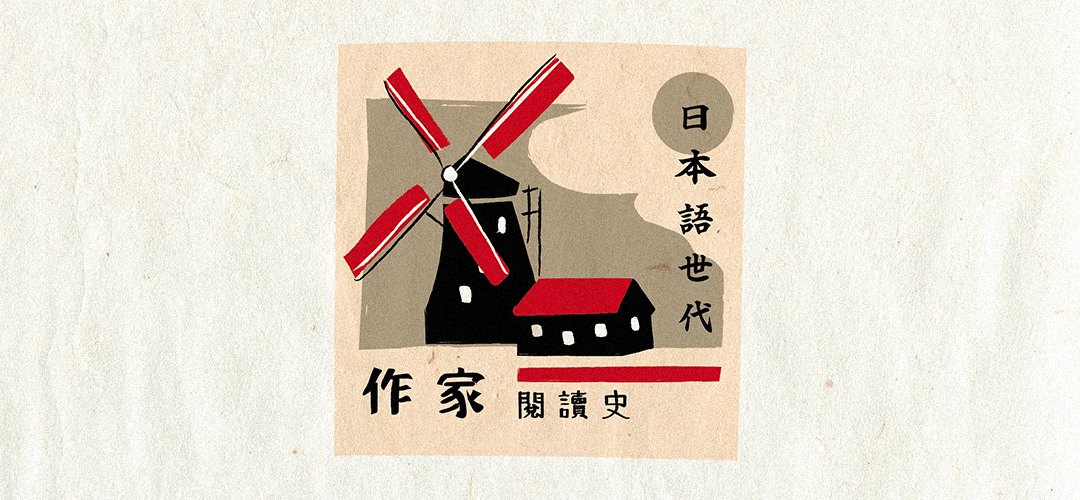 影音檔案庫
影音檔案庫


Translated by Lee Ying-Yi (李盈儀)
The poets of Le Moulin Rouge Poetry Society were not the only local Taiwanese poets that had been influenced by modernism during the pre-war period, but they were without doubt the most significant cases. There were mainly two reasons. Firstly, in addition to creating modernism works, the key persons of Le Moulin Rouge Poetry Society Yang Chichang and Lee Zhangrui were also extremely active in structuring the modernism methodology as they published many poetics with the undertone of theoretical manifestos. This shows not only had they broken away from the infantry period of practicing and had gained high self-consciousness for modernism methodology, it also proves their literary works acquired a stance, a high acknowledgement of problem awareness, and, to a certain degree, characteristics of a “movement.” Secondly, among the domestic poets that had been influenced by modernism during pre-war Taiwan, only the poets of Le Moulin Rouge Poetry Society existed as a “group.” Although this literary group that consisted of four Taiwanese domestic poets and three Japanese poets residing in Taiwan had not developed into the scale of Japan’s poetry society “Poetry and Poetics” which dominated the central literary field, the participation of a literary movement in the unit of a group is evidence that modernism in Taiwan was no longer random, occasional, individual, literary practices, but a small scale of “cluster infection.”
Le Moulin Rouge Poetry Society was founded in Tainan during the autumn of 1933. Its aesthetic positioning has always been regarded as surrealism. However, it is noteworthy that it is not accurate to say Le Moulin Rouge Poetry Society was “surrealist.” In fact, the poets of Le Moulin Rouge Poetry Society had not defined themselves as a surrealist poetry society. When Sato Hiroyuki, a Japanese author who lived in Taiwan, stated that Yang Chichang is an elegant poet of Dadaism and surrealism, Yang refuted the Japanese author. Instead of considering Le Moulin Rouge Poetry Society as a “surrealist poetry society,” it would be more accurate to say that it was a poetry society with a modernism tendency that had accepted the stimulations and influences of the Japanese translated and modified avant-garde poetry which “consists of” modernism ideologies. Since the aesthetic genealogy of Le Moulin Rouge Society also shared traits of combining several different concepts, it would be unsuitable to define the aesthetic features of Le Moulin Rouge Poetry Society with simply “surrealism.” Simultaneously, since Le Moulin’s understanding of “surrealism” is derived from that of Japan’s, it had been affected by Japan’s intellectualism. Thus, their understanding was different from the French version’s surrealism of which André Breton intended to bypass the control of consciousness and rationality and to explore the world of the unconsciousness. Furthermore, Yang refused to accept all of the foreign trends of thought; instead, in addition to inspire the Taiwanese literary field with new imported ideologies, he tried to incorporate Taiwanese culture, folklore, and the situations of the colonized land. Therefore, considering the aesthetic genealogy and dissemination, even though we can overgeneralize a travelling route called the “surrealism genealogy” that began in France, interpreted in Japan, and eventually reached the colonized Taiwan, the “surrealism” presented in the poetics and poetry works of Le Moulin Poetry Society were already different from the French and Japanese versions.
In 1930, Yang Chichang and Lee Zhangrui went to Japan one after the other. Although they did not spend much time Tokyo, they were lucky enough to participate in the latter period of Poetry and Poetics’ publication, the iconic modernism journal in Japan. Therefore, it is without doubt that their Tokyo days which lasted less than two years had caused profound influences to literary movements after they returned to Taiwan.
Some of the greatest influences on Yang and Lee were Yukio Haruyama’s intellectualism that led the Japanese modernism movement, and Junzaburo Nishiwaki’s surrealism poetics that had affected Japan’s fundamental understanding of surrealism. Intellectualism is the core idea of Haruyama’s poetics theory. It was also the main weapon he used to claim to “break away from the dictating status of the old and poetics-less poetry field, and properly represent the poetics of nowadays.” The so called “intellectualism” does not equal to the operation of “rationality”; rather, it is “a mentally self-aware and self-conscious activity” regarding the creation of poetry and aesthetic methods. Haruyama contradicts “formism” with “contentism,” and paid special attention to the construction of the medium “shi qi wu” (the contents of poems, referring to language signifiers). He thinks that the functions and representation methods requires research and studying. Following the same trend of thought, Haruyama considers poetry as a “creating behavior” of self-awareness rather than an unnatural “incident.”
The literary views that were stimulated by the “esprit nouveau” movement led by Yukio Haruyama and Junzaburo Nishiwaki were brought back to Yang and Lee’s homeland Taiwan after their short stay in Tokyo. They were unsatisfied with the mainstream of Taiwanese new literature which promoted realism, leftist literature, and lyrical poems. In their opinions, the type of literature that mingle reality with literary creation, or the kind of literature that aims to arouse emotional reactions were too old-fashioned and unbearable. Not only were these poems unworthy of being defined as “new” literature, they also failed to fulfill the purpose and significance of a literary “movement.” In 1933, Yang and Lee asked Lin Xiuer to establish Le Moulin Rouge Poetry Society together in Tainan. Since the December of 1933 until the February of 1935, the members of Le Moulin consisted of Yang Chichang, Lee Zhangrui, Lin Xiuer, and Japanese poet Fusako Toda. They started to publish poems, novels, poetics, and criticisms frequently on the “literature and arts” column held by Yang. Among the 32 existing “literature and arts” columns, there are 25 records that include the works of Le Moulin poets, which stands for 78.1% of all remaining records. This is extremely noteworthy because there had never been records of such frequent publications of modernism works, poetics, or criticisms within the period of one year on mainstream media, not to mention being published on the largely circulated Tainan Shinpo. Therefore, the founding of Le Moulin Rouge Poetry Society in 1933 is regarded as an iconic event in the Taiwanese avant-garde arts development. Before 1933, records related to modernism were random events happening in certain regions, and most of them were about abstract concepts, history of aesthetic development, and descriptions of events while actual practitioners were few. However, after Le Moulin Rouge Poetry Society was founded in 1933, modernism concepts that were originally spread fragmentarily started to implement on a domestic level with clusters of literary practicing appearing; with continuous exposure in mainstream media, it has gradually becoming a banding existence.
We can see that as Le Moulin Rouge Poetry Society began to form and to become active, the concepts of modernism were no longer stiffly introduced as something “alien”; instead, these concepts were granted with Taiwan’s own features after Yang Chichang and Lee Changrui embedded them in their own poetics.
In addition to intellectualism, the most significant influence to Yang and Lee were Junzaburo Nishiwaki’s surrealism poetics and imagism. The method is to cause the real to undergo an unreal metamorphosis through “imagination” in order to pursue new ways of representation or to write about “new and amazing objects.” Yang further captured specific keywords in Nishiwaki’s theory, such as customs, betel nuts, and native people, and connected imagism to Taiwan’s own local culture. Additionally, Yang also borrowed the concept of the “native people” and tried to put himself in the position of “barbarians = the other = outside of the system.” Through the “alienation” of “self = the other,” he tried to “explore the olfaction and sensations that are similar to that of a savage” in order to re-experience the world that we had already taken for granted. Aside from transforming into a “native,” he pursued “the world of the natives = Taiwan” which he regarded as “object of aesthetics,” also referring to “the desire to the world of the natives.” This is also the reason Yang considers Taiwan as the “hotbed of literature.” Doubtlessly, there are tendencies of viewing the other who were also on the island with an exotic gaze or of exoticizing the self.
While Yang Chichang and Lee Changrui were the key persons in the colonized Taiwan during the modernism avant-garde movements, Lin Xiuer and Chang Liangdian who were born around 1915 were playing the role of the “rearguard.” Even though Lin and Chang joined Le Moulin Rouge Poetry Society and were also influenced by Japan’s modernism poetry movement, neither did they aggressively claim nor accept a certain type of aesthetic guideline. Instead, they supported Yang and Lee’s more radical avant-garde movements by practicing the modernism poetry with the blended “intellectual” and “lyrical,” protecting the bottom lines of their arts school. This kind of “rearguard” position is extremely significant in a movement. These poets from Le Moulin who were born around 1915 were slightly later than their predecessors of the 1910 era in terms of the time they arrive in both Tokyo and the literary field. This distinction not only decided the different trend of thoughts the two generations were exposed to, but also established the hierarchy system in the poetry society. Taking Lin Xiuer as an example, within the dialectical thinking between the intellectual and the lyrical, he gradually confirmed his original intentions in writing lyrical poetry. He eventually dropped out of modernism after 1937, mainly working on traveling poetry and lyrical poems dedicated to specific people. This type of dialects of aesthetics reflected thorough one’s creation developments was unobvious on Yang Chichang and Lee Changrui, who practiced and regarded modernism as an avant-garde “movement.” As activists, Yang and Lee would need to propose radical aesthetic theories that were similar to a manifesto or guideline in order to construct a new aesthetic position in the colonized Taiwan’s existing literary field; yet, Lin who was in Tokyo had a freer space to explore. While Lin was active in the central literary field, adjustments and scrutiny of the harm caused by modernism’s radicalness had taken the place of modernism movements and the avant-garde. Lin participated in Yang and Lee’s modernism movement indirectly by sending his manuscripts to them as he inherited the thoughts and aesthetic styles of “the intellectual lyrics” of the “seasons” art school. It is clear that each stage of Japan’s modernism poetry movement was simultaneously reflected on the literary movements and aesthetic genealogy of Le Moulin Rouge Poetry Society, which had respectively become the avant-gardes and rearguards of Taiwan’s modernism poetry movements during the Japanese colonial period.
Editor: Yeh Hsing-Jou
Proofreading: Yizai Seah